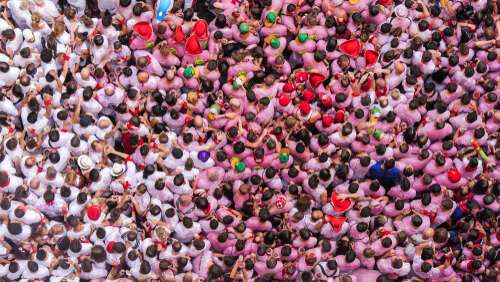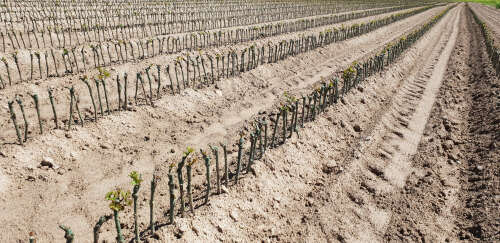
Forget sanitized modern versions, a true harvest festival is a wild and unbridled celebration of the culmination of the agricultural year, says Stuart Walton.
The completion of the wine harvest has been a time of hectic merrymaking since antiquity. In the northern hemisphere, most of its festivals have traditionally taken place in late September.
Certain red grapes may need to hang longer to gain full phenolic maturity, while those growers making late-harvest and botrytized wines will await the drying and rotting of the later autumn. But as the shortening of the days can no longer be ignored, and the evening sun is gentler and lower than it was, the moment for celebration has arrived.
A sense of relief is woven into the festivities. The year’s production has ideally survived whatever the elements have been able to throw at it, in the form of spring frosts, pelting hailstorms, predatory birds, mildew and rot, and has ripened to its full potential.
Its picking has taken place under golden, slanting sunlight from benign cloudless skies, and the presses are at work. The vintage is not simply a matter of winter sustenance gathered in, like other crops, but of the grower’s year-round livelihood in markets near and far.
Harvest festival in Jerez: No mere party weekend
In Jerez in southern Spain, the Fiesta de la Vendimia is no mere party weekend, but a full two weeks of thoroughgoing celebration, opening to coincide with the Virgin Mary’s saint’s day on September 8.
A queen of the vintage is elected, and is elevated on to an ornately decorated wagon that is borne through the streets of Jerez de la Frontera, her masked courtiers scattering little gifts and sweets to the clustering crowds of children. Grapes are trodden and vines are blessed.
The nature of the celebrations has evolved over time—perhaps the motorcycle races will eventually displace the bull-baiting altogether—but the roots of the festival, and the complex matriarchal symbolism that unites the classical mythologies with Christianity, are unchanged over centuries.
In Ribera del Duero once, I joined a vineyard workers’ afternoon repast. In a huge marquee, we sat at long trestle tables in our dozens, feasting on jointed lamb that came to the table in the roasting dishes, accompanied by little more than vinaigretted leaves and bread.
A lot of raw young red was drunk. There was still plenty of picking to be done, but the atmosphere of consummation, of the agricultural year coming to its annual fulfilment, was palpable.
It isn’t only a question of celebrating after the fact. At Haro in Rioja, the growing season kicks off at midsummer with one of Spain’s more notable festivals, the Batalla del Vino. The Battle is not a polite tasting competition, but a literal wine-fight.
Participants dress in pristine white, for optimal stainability. A Mass is celebrated at the church of San Felices de Bilibio. The firing of a rocket is the signal for battle to commence, and thousands of liters of red wine are hurled, spattered and squirted until every face is blue, every chin dripping, every shirt soaked and clinging to its wearer’s body, and the entire scene resembles a massacre.
One of the meanings signified by the Batalla is surely that of the celebration of surfeit that alcohol production itself connotes. The whole spectacle is a colossal waste of plentiful resources.
Harvest queens
The presence of harvest queens at so many of Europe’s wine celebrations refers distantly back to the maternal Greco-Roman deities of the harvest in Demeter and Ceres.
At the various Dionysian wine festivals that extended over the winter and early spring, women played much more prominent roles than the everyday social life of the Greek world permitted them.
At the Anthesteria, an elect group of women conducted a symbolic ceremony of marriage of the Athenian ritual queen to Dionysus. It was a moment of sacramental dignity amid the pantomimic dressing-up and the drinking contests.
In the month of the inundation in Egypt, when the Nile rises to flood the land once more with its nourishment, a Day of Drunkenness was traditionally observed. It commemorated the saving of humankind by the great god Ra, who in mitigation of the goddess Hathor’s thirst for their blood, flooded the fields with crimson-dyed alcohol, tricking her into intoxicating herself. The correct way to celebrate each year was to drink oneself into a blackout.
What has been indispensable to all wine festivals since antiquity is the atmosphere of unbridled celebration. If there isn’t an element of the uncontrolled about it, it isn’t really a festival.
Today’s harvest festivals in the wine regions are often little more than glorified farmers’ markets, a chance to sell some product amid the raffles and hoop-la. Only a properly ecstatic—literally “out of oneself”—observance, with all the befuddlement and disarray that goes with it, is capable of honoring the elemental forces that brought wine to us in the first place.
World of Fine Wine is hosting the World’s Best Wine List Awards on September 12. Sign up for the event here






